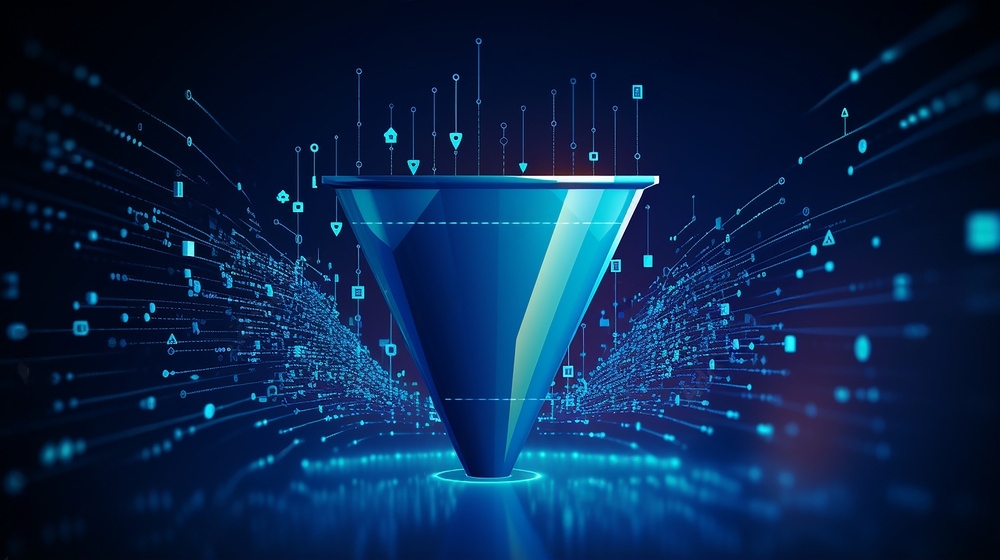Successful organizations differentiate themselves through B2B sales prospecting, which is the process of identifying, engaging, and converting new clients in today’s competitive and saturated market.
Even though the notion of prospecting may seem simple, not every technique will result in new clients!
Sales prospecting necessitates a combination of strategically planned strategies and new ways tailored to your industry.
Whether you’re a seasoned sales professional or just starting out, learning the best B2B sales prospecting strategies is essential.
46% of B2B salespeople see lead quantity and quality as their top challenges, and one method to address this is to execute a killer sales plan. However, how you handle this will depend on your business and what works best for you.
This guide delves into the intricacies of sales tactics and provides guidance on developing and customizing one for your organization.
1# Understanding Your Audience
Understanding your audience is like knowing who your friends are—the better you understand them, the more meaningful your interactions become. This means knowing what your potential customers are searching for online.
It’s about discovering the words and phrases they use when looking for products or services like yours. This understanding helps you create content that speaks directly to their needs, making your website more visible on search engines.
Think of it as a conversation – when you use the same language your audience uses, search engines recognize the relevance and boost your site’s ranking. It’s about figuring out who your potential business clients are, what they need, and how they make decisions.
In simple terms, it’s about knowing your customers inside out. This understanding helps you tailor your approach, so you’re not just offering a product or service but providing a solution to their specific problems.
Understanding your audience in B2B sales involves building stronger connections, offering what they need, and becoming the go-to solution, resulting in a win-win situation for all involved.
2# Creating Personalized Content
Creating personalized content is like writing a letter to a friend—you make it special just for them. Customizing emails, presentations, and messaging is crucial for effective communication in B2B sales, aiming for a personal touch similar to a friend’s birthday card.
From a commoner’s viewpoint, it’s like going the extra mile to understand what someone likes and tailoring your gift to match their interests. In B2B, it’s about understanding a business’s unique needs and presenting your product or service as the perfect solution. It’s not one-size-fits-all; it’s more like a perfectly tailored suit.
This approach makes your potential clients feel seen and valued. They’re not just another name on a list; they’re the main character in your story. Personalized content in B2B sales enhances client understanding, strengthens connections, and increases the likelihood of successful partnerships, resembling the joy of a personalized letter.
3# Using Data Analytics.
Think of data analytics as your B2B sales superhero sidekick. Its role is to help you make smarter decisions and connect with potential clients in the most personalized way possible.
Data analytics is a strategic tool that predicts client needs by analyzing website traffic, clicks, and duration. This data is like a treasure trove of insights.
For a commoner, it’s akin to knowing exactly what your friend likes and dislikes. In B2B sales, data analytics allows you to understand your potential clients’ behavior and preferences. It’s not just about seeing numbers; it’s about uncovering patterns and trends that guide your decisions.
With this magical crystal ball, you can predict what your clients might be interested in and tailor your approach accordingly. It’s the secret sauce that transforms your outreach from generic to personal, making your potential clients feel like you truly understand their needs.
4# Implementing Multichannel Communication
Imagine communicating with your friends not just through text but also through calls, social media, and even face-to-face meetings. That’s what a multichannel approach to B2B sales is all about – using various ways to connect with potential clients, making your engagement strategy like a well-rounded conversation.
In simpler terms, it’s like having multiple tools in your toolkit. B2B sales need the use of several channels, such as emails, social media, and phone conversations, to successfully engage with potential clients and ensure their comfort.
Using many communication channels in B2B, such as texting, phoning, and coffee meetings, guarantees that you contact potential clients and promote engagement with your message.
In B2B sales, think of implementing multichannel communication as having a versatile conversation toolbox. It allows you to connect with potential clients in the ways they prefer, making your engagement strategy more inclusive and effective.
5# Building Trust and Credibility
Building trust and credibility in B2B sales is like becoming the reliable friend everyone turns to for advice. It’s about making potential clients feel confident and comfortable choosing your business. Think of it as being the friend who always keeps their promises and never lets you down.
In everyday terms, it’s like showing your friend proof that the new restaurant you recommended is fantastic. In B2B sales, you do this by using techniques such as case studies and testimonials—real stories that prove your business has successfully helped others. It’s like saying, “Look, my friends loved the restaurant, and so will you!”
Transparent communication is key. It’s like being honest with your friend about both the strengths and weaknesses of the restaurant. In B2B, it means openly discussing what your business can and cannot do and setting realistic expectations.
So, in the B2B world, building trust and credibility is about being that dependable friend. Use real stories, honest communication, and proof of your capabilities to assure potential clients that choosing your business is a wise and trustworthy decision. Just like in friendships, trust is the foundation for successful and long-lasting partnerships in B2B sales.
6# Overcoming Objections Effectively
Handling objections in B2B sales is like gracefully navigating bumps in a conversation. Imagine a friend expressing concerns about a plan – you’d address their worries with understanding and assurance. In B2B, objections are similar; they’re concerns potential clients raise.
Offering strategies and scripts is like having a well-prepared response in your back pocket when your friend questions your plan. In B2B, it’s about anticipating common concerns and having thoughtful answers ready. This way, objections become chances to showcase your expertise and turn hesitations into opportunities.
Managing objections effectively is like driving over speed bumps without causing a jolt. Addressing them with grace and compelling responses strengthens trust and confidence, paving the way for successful B2B partnerships.
Conclusion
In wrapping up our guide to strategic prospect engagement in B2B sales, think of it like summarizing the best lessons from a helpful friend.
Emphasize the key takeaways – understanding your audience, crafting personalized content, leveraging data, multichannel communication, building trust, and overcoming objections. Remind businesses that implementing these strategies isn’t just a short-term win; it’s an investment in long-term success.
Encourage them to embrace these practices, making strategic prospect engagement a consistent part of their approach. Like a good friend’s advice, these strategies pave the way for sustained success and meaningful connections in the world of B2B sales.
If you want to improve your B2B sales, Pangea is here to help you with its lead management services. To learn more, contact us now.






